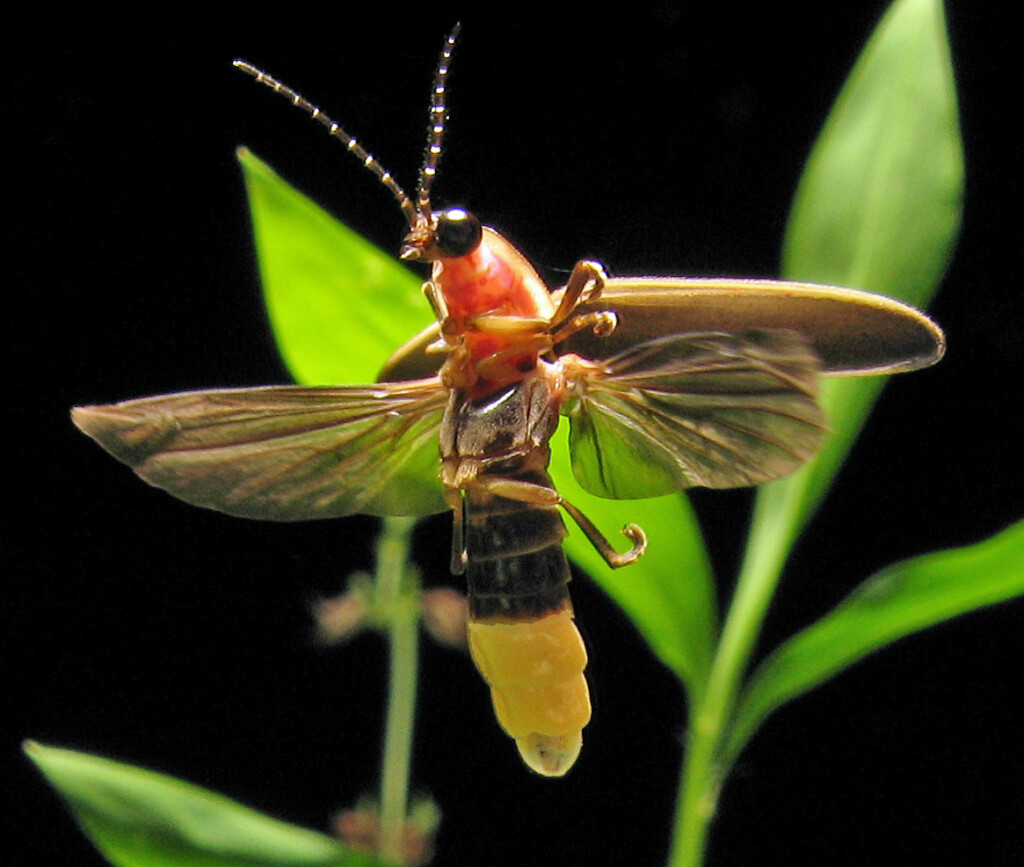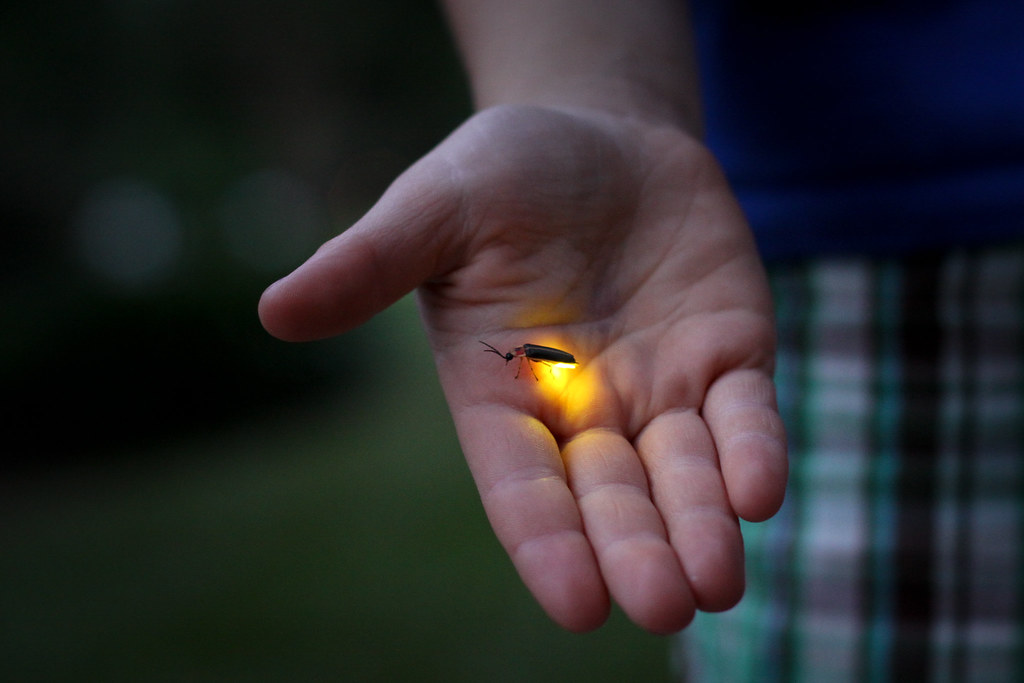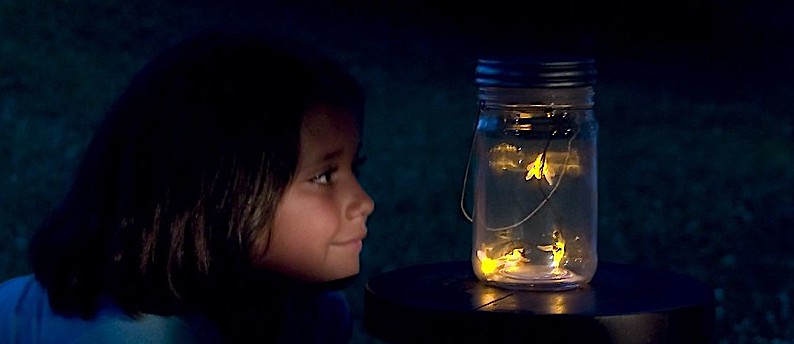BY KIERAN LINDSEY, PhD
Walking through the park at dusk the other night, I saw a single spark. Then another. Soon there were too many to count, hovering in the airspace between my chin and my ankles, lighting my way past the lake, the band stand, and the Park House.
Who needs a time machine when you have memory to transport you to another place, another you? Those sparks must have kindled a few synapses, because suddenly I’m six-years-old again, running with my best friend Cindi through freshly cut grass that envelopes us in the signature scent of a suburban summer while staining the soles of our feet DayGlo green. Wild with excitement at being allowed to stay outside after dark, we’re relentless, ruthless, giggling predators intent on imprisoning lightning bugs in an empty Miracle Whip® jar.
If you live in the eastern half of the U.S., tell your neighbor or coworker you watched fireflies last night and see what happens. I’ll bet you, dollars to donuts, their faces will soften and glow as if bathed in the bioluminescence of an impromptu nightlight. It’s Proust’s Remembrance of Things Past all over again, but with Coleoptera instead of cookies.
That’s right, they’re not flies and not technically bugs either. They’re beetles, a group that doesn’t usually garner much affection from the human race. Let’s face it—we like our non-human animals to have fur or feathers and large, liquid, simple eyes. If you can make your butt blink on warm summer evenings, however, folks are willing to see you in a new light.

Special organs in the abdomen convert oxygen and a compound called luciferin into a yellow or chartreuse glow. They’re quite good at this, by the way. Common incandescent light bulbs convert only 10% of an energy supply into light; the other 90% is emitted as heat. Fluorescent bulbs transform 90% of the energy into light but fall short of the nearly 100% efficiency of a firefly’s “cold” light.
As kids, we learn that fireflies flash to find a mate. What you may not know is that each species—and there are many different species in North America alone—has it’s own unique light show. This helps everyone pair up correctly. Males fly around broadcasting a kind of visual Morse code to the females hanging out in or near the grass. When a female spots a familiar pattern she flashes a response, then they signal back and forth until the male finds her.
Some flash patterns warn away predators who’ve come to associate an unpleasant meal with a specific blink beat. This doesn’t work with every predator, juvenile Homo sapiens being one obvious example. Often, though, the biggest threat comes from a relative—some species are able to mimic the unique display pattern of their kin to trick the males and… well, use your imagination. Or, better yet, let Isabella Rossellini explain it to you.
Returning from a reverie of 1965 to present day, I had a vague sense of something missing. Then it hit me—I didn’t see a single child with a jar in pursuit of bobbing, weaving cold-light moonbeams!
I found this disturbing.
Disheartening.
I have a sinking feeling that an overwhelming number of them are focused on the blue light of a smartphone screen, and not the real world in which they actually live.
My own lifelong fascination with the natural world wasn’t sparked by National Geographic Specials about exotic creatures living halfway around the world (although, in time, those programs came to have an impact as well). There’s no doubt in my mind that my love of all things wild started as a toddler, sitting in my mom’s lap in the backyard, watching cardinals grow bold with curiosity as she whistled their calls — Birdy-birdy-birdy! Cheer-cheer-cheer! — back to them. It blossomed because, as a grade-schooler, I was allowed to raise tadpoles in galvanized buckets, catch crawdads in plastic cups, tie thread-leashes to the legs of June bugs, and run after lightning bugs with mayonnaise jars.
Maybe, if I’d been walking through a subdivision, I’d have seen evidence the same spark that caught fire in me all those years ago still has a chance to ignite wonder in the up-and-coming generation. Maybe there are thousands of children darting across thousands of lawns after millions of flashing yellow lights all across the U.S.
I hope so.
But can we really afford to leave it to chance?
I don’t think so.
So would you do a favor for me, and our planet?
Find a kid you know.
Pull an empty jar down from a cabinet shelf and poke some holes in the lid.
Then go outside after dinner tonight, catch some fireflies, and light a spark.


